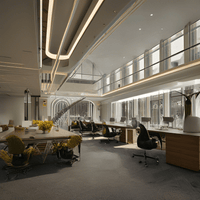A Brighter Future for Healthcare: How LED Troffer Lights Can Benefit Hospitals
Introduction
While lighting may not immediately come to mind when envisioning advancements in healthcare technology, having the proper lighting in hospitals and medical facilities can greatly benefit both patients and staff. Bright, glare-free LED troffer lights can provide energy efficiency gains through lower maintenance costs and energy use, positively impact patient experience through circadian lighting and improved spaces, and offer numerous infection control and diagnostic accuracy benefits compared to fluorescent tube lighting currently used in many healthcare facilities. Overall, upgrading to LED troffer lighting represents a brighter future for hospitals seeking to enhance the quality of care provided.
Energy efficiency benefits of LED troffer lights
LED troffer lights provide numerous energy efficiency benefits for hospitals seeking to reduce costs. LED troffers use around 75% less energy than fluorescent tube lighting, significantly saving utility bills. Additionally, LEDs have a lifespan of around 50,000 hours, nearly twice that of fluorescent tubes, meaning LEDs need replacing less frequently. This means fewer labor costs required for maintenance and bulb replacement. For a large hospital, the combined savings from reduced energy and maintenance costs from switching to LED troffers can amount to tens of thousands of dollars per year. At the same time, the higher upfront costs of LEDs are decreasing rapidly, making them a more feasible investment.
Potential health benefits of LED troffer lights
In addition to financial gains, LED troffer lights can also benefit the health and well-being of hospital patients and staff. Higher light levels from LEDs have been shown to improve patients' perceptions of spaces, making them seem brighter, cleaner, and safer. LED lighting also enables adjustable color temperatures that align with individuals' circadian rhythms. Warmer, yellow lighting in the evening can promote sleep, while whiter light during the day helps boost alertness. These factors can aid in faster recovery times for patients. For staff, properly designed LED lighting can reduce eye strain and fatigue, enhancing productivity and job satisfaction.
Infection control benefits
LED troffer lights also offer numerous advantages regarding infection control within hospitals. Because LEDs emit less heat than fluorescent tubes, they inhibit the growth of bacteria and viruses that thrive in warm, dark environments. The hard surfaces of LED fixtures are also easier to sanitize and disinfect than fluorescent tubes, helping reduce the spread of infections. Switching to LEDs has lowered rates of hospital-acquired infections like C. diff and MRSA. Furthermore, LED lights do not contain mercury like fluorescent tubes, eliminating the health risks and additional safety procedures required when disposing of fluorescent bulbs.
Improved lighting quality of LEDs
The lighting quality produced by LED troffers also exceeds that of fluorescent tubes, offering key benefits for hospitals. LED lights emit light that is significantly truer and whiter in color compared to the somewhat yellowish light from fluorescent tubes. LEDs' improved color rendering properties can aid in clinical tasks and diagnostic accuracy. For example, LED lighting helps clinical staff assess wound healing, jaundice in newborn infants, and blood oxygen levels more accurately. The directional lighting from LEDs also reduces glare and shadows, improving visibility. Overall, the higher quality lighting from LED troffers can enhance the accuracy and efficiency of clinical work within hospitals.
Ease of installation and maintenance of LED troffers
Beyond the operational benefits, LED troffer lights are also relatively easy to install within hospitals. Because they are drop-in replacements for most fluorescent troffers, they can typically be retrofitted into existing light fixtures without major construction or rewiring. This makes the transition to LEDs a more manageable upgrade for facility managers. And because LEDs have such a long lifespan and do not require replacement, they are far more convenient and cost-effective to maintain over time. Staff no longer need to change out fluorescent tubes every few years. The plug-and-play design of most LED troffers means fewer maintenance headaches and quicker repair times when issues do arise. Overall, LEDs offer a much lower total cost of ownership for hospital lighting.
Conclusion
In summary, upgrading to LED troffer lights represents a brighter future for healthcare facilities seeking to enhance the care they provide while lowering costs. LEDs provide numerous operational, financial, and health benefits compared to traditional fluorescent tube lighting, from energy savings and longer lifespans to improved infection control, better lighting quality, and easier maintenance. As healthcare moves towards a more technology-enabled and patient-centric approach, upgrading lighting infrastructure with LED troffers is an investment that can yield big dividends - from shorter patient stays to fewer medical errors to higher staff morale. By making the switch to LEDs, hospitals can truly light the way to a better, more sustainable healthcare system for the future.



